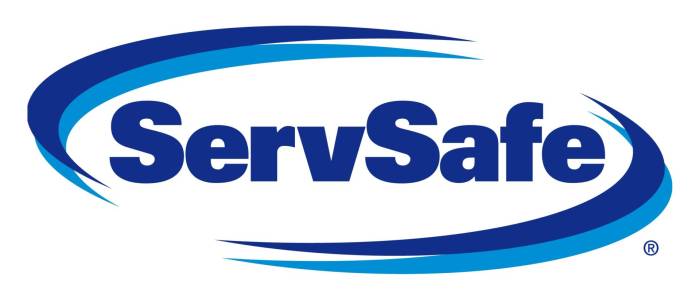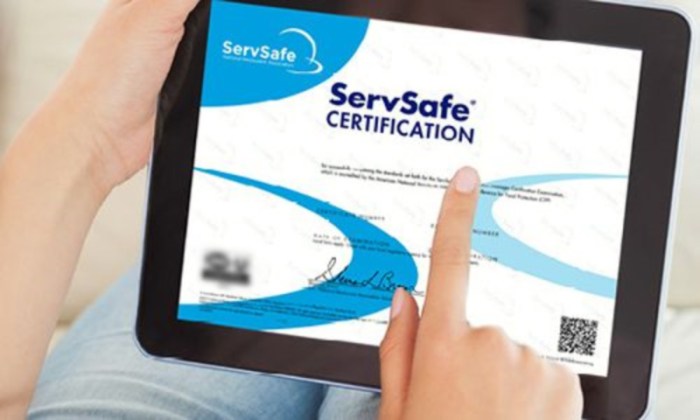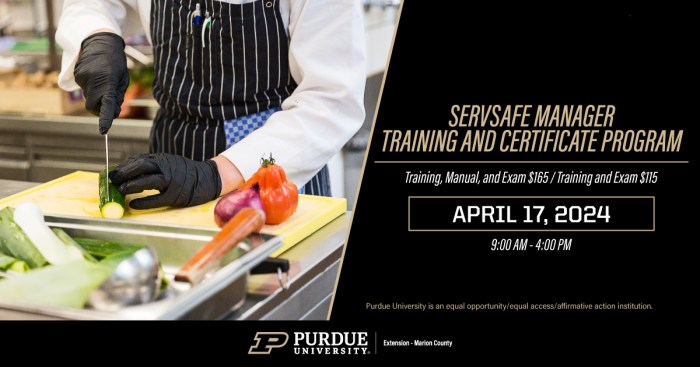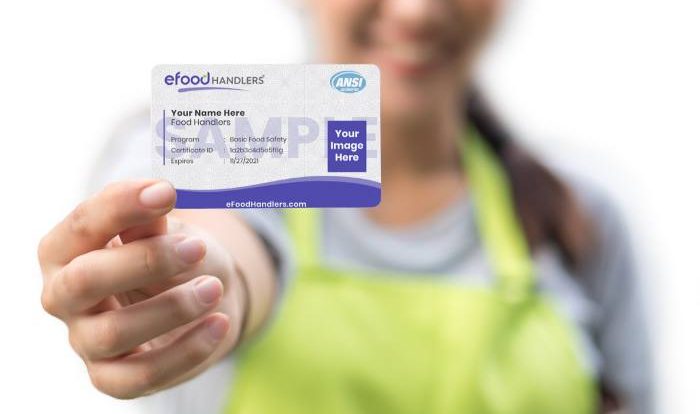A key element to a successful training program is servsafe – As a key element to a successful training program, ServSafe takes center stage, ushering readers into a realm of knowledge and expertise. This comprehensive training program empowers food handlers with the skills and knowledge necessary to ensure food safety and prevent foodborne illnesses, ultimately safeguarding public health.
ServSafe training encompasses essential components that contribute to its effectiveness, including qualified instructors, comprehensive training materials, hands-on practice, and engaging employee participation. These elements work synergistically to create a dynamic learning environment that fosters knowledge retention and promotes best practices in food handling.
ServSafe Training Program

ServSafe training is an essential component of a successful food safety program in the food industry. It provides food handlers with the knowledge and skills necessary to prevent foodborne illnesses and ensure the safety of the food they serve.
According to the Centers for Disease Control and Prevention (CDC), foodborne illnesses cause an estimated 48 million illnesses, 128,000 hospitalizations, and 3,000 deaths in the United States each year. ServSafe training has been shown to be effective in reducing the risk of foodborne illnesses by up to 50%.
Key Elements of a Successful ServSafe Program
The key elements of a successful ServSafe training program include:
- Qualified and experienced trainers
- Comprehensive training materials and resources
- Hands-on practice and simulations
- Employee engagement and motivation
Benefits of ServSafe Certification, A key element to a successful training program is servsafe
Obtaining ServSafe certification provides several benefits for food handlers, including:
- Enhanced knowledge and skills in food safety practices
- Improved employee confidence and morale
- Reduced risk of foodborne illnesses and legal liabilities
Implementation of a ServSafe Program
To implement a ServSafe training program in a food establishment, follow these steps:
- Identify training needs
- Schedule and deliver training
- Monitor and evaluate the program’s effectiveness
Best Practices for ServSafe Training
To conduct effective ServSafe training sessions, follow these best practices:
- Use engaging and interactive teaching methods
- Provide clear and concise instructions
- Encourage active participation from trainees
Role of ServSafe in Food Safety
ServSafe plays a vital role in promoting food safety and public health by:
- Establishing industry standards for food handling practices
- Providing training and resources to food establishments
- Collaborating with government agencies and health organizations
User Queries: A Key Element To A Successful Training Program Is Servsafe
What are the benefits of ServSafe certification?
ServSafe certification provides numerous benefits, including enhanced knowledge and skills in food safety practices, improved employee confidence and morale, and reduced risk of foodborne illnesses and legal liabilities.
How do I implement a ServSafe training program in my food establishment?
Implementing a ServSafe training program involves identifying training needs, scheduling and delivering training, and monitoring and evaluating the program’s effectiveness. A step-by-step guide is available to assist with this process.
What role does ServSafe play in food safety?
ServSafe plays a crucial role in promoting food safety and public health by establishing industry standards for food handling practices, providing training and resources to food establishments, and collaborating with government agencies and health organizations.


